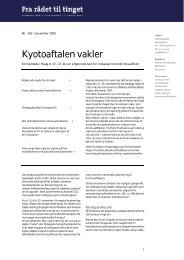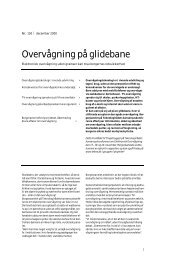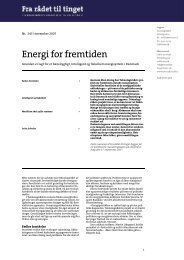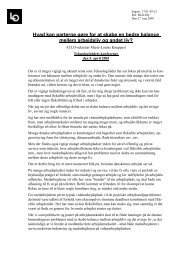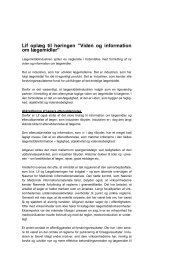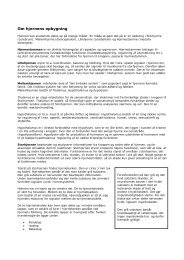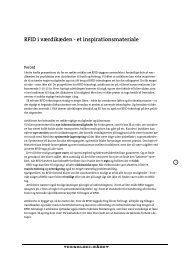Energi i fremtiden - globale, regionale og nationale ... - Teknologirådet
Energi i fremtiden - globale, regionale og nationale ... - Teknologirådet
Energi i fremtiden - globale, regionale og nationale ... - Teknologirådet
You also want an ePaper? Increase the reach of your titles
YUMPU automatically turns print PDFs into web optimized ePapers that Google loves.
The IEA was established in November 1974 in response to this oil crisis as an autonomous intergovernmental<br />
entity within the Organization for Economic Cooperation and Development (OECD) to<br />
study energy supply and security, and advise the member nations accordingly. In general, OPEC is accepted<br />
as a political organization with its statements being coloured accordingly. What many do not realize<br />
is that the IEA is also a political organization and that its reports are highly coloured by the perceived<br />
best interest of its members. It therefore becomes necessary to try to lift the political veil from the contents<br />
of the Energy Outlook 2004.<br />
Political agenda<br />
The political agenda is laid out in Figure 1, “Oil Demand and GDP Growth”.<br />
Figure 1: Relation between Oil Demand and GDP Growth, figure 3.1 in WEU2004<br />
It shows a strong correlation between oil demand and GDP growth, save during the 1970s and 1980s,<br />
when most of the world’s nuclear power plants come into operation reducing the demand for oil to fuel<br />
electricity generation. When the increase of nuclear power was phased out in many countries, oil demand<br />
accordingly grew by about two percent to offset the decline of nuclear power and deliver the required<br />
growth of GDP. The current study is presents of modest rate of economic growth at 1.6 percent a<br />
year. Starting from 77 Mb/d (million barrels a day) in 2002, this rate of increase means that production<br />
would have to rise to 121 Mb/d by 2030. Politically, it is not possible for the IEA to present an outlook<br />
contemplating less.<br />
Let us evaluate how plausible such a forecast might be. In 2002, the World produced 77 Mb/d or 28 Gb/a<br />
(billion barrels per year), which has to rise under the IEA forecast to 44 Gb/a in 2030. It implies that total<br />
production from 2003 until 2030 will amount to 1020 Gb. That is more than was consumed during the<br />
20 th Century, and is in the same order of magnitude as the existing reserves. It does not sound plausible.<br />
51





